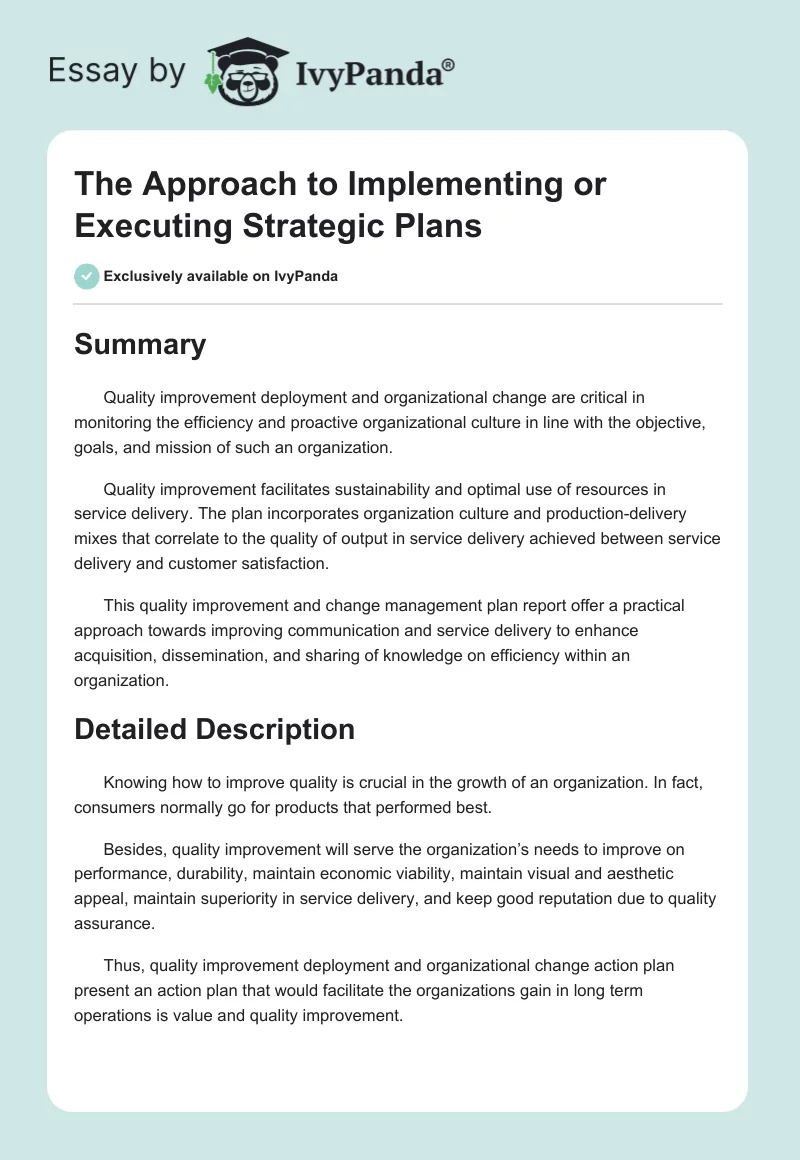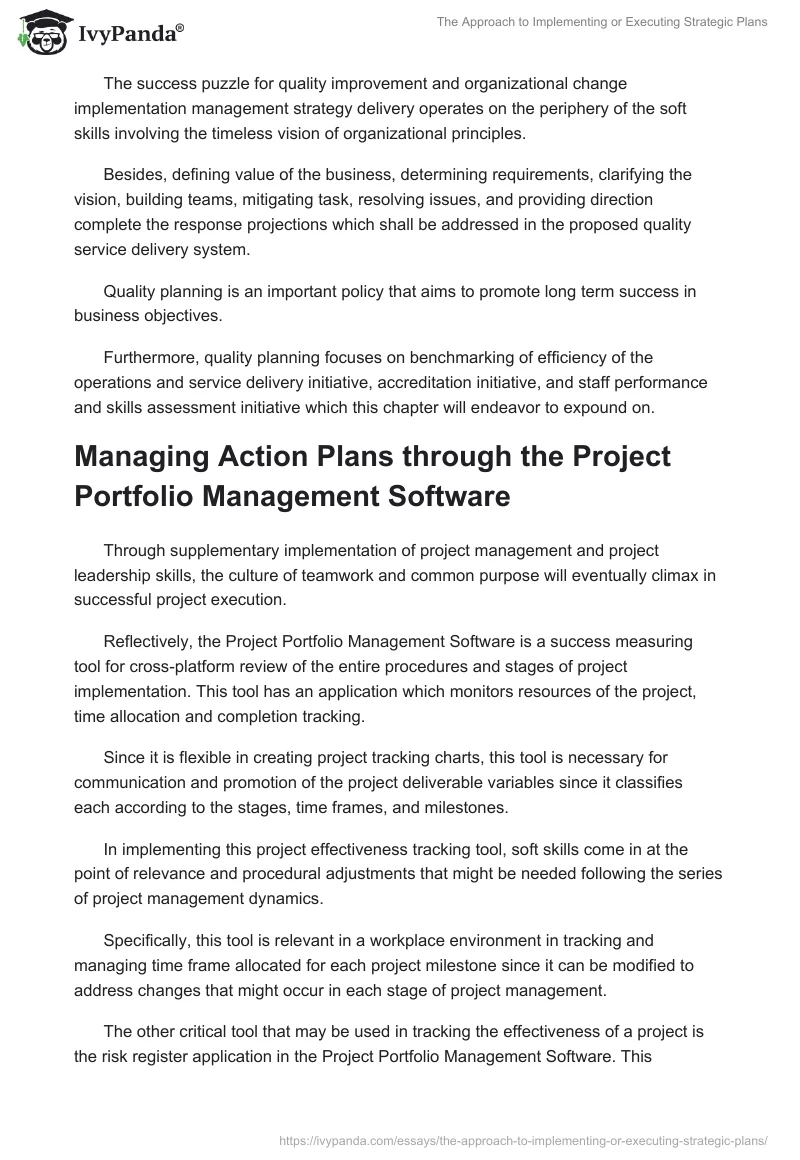Summary
Quality improvement deployment and organizational change are critical in monitoring the efficiency and proactive organizational culture in line with the objective, goals, and mission of such an organization.
Quality improvement facilitates sustainability and optimal use of resources in service delivery. The plan incorporates organization culture and production-delivery mixes that correlate to the quality of output in service delivery achieved between service delivery and customer satisfaction.
This quality improvement and change management plan report offer a practical approach towards improving communication and service delivery to enhance acquisition, dissemination, and sharing of knowledge on efficiency within an organization.
Detailed Description
Knowing how to improve quality is crucial in the growth of an organization. In fact, consumers normally go for products that performed best.
Besides, quality improvement will serve the organization’s needs to improve on performance, durability, maintain economic viability, maintain visual and aesthetic appeal, maintain superiority in service delivery, and keep good reputation due to quality assurance.
Thus, quality improvement deployment and organizational change action plan present an action plan that would facilitate the organizations gain in long term operations is value and quality improvement.
The success puzzle for quality improvement and organizational change implementation management strategy delivery operates on the periphery of the soft skills involving the timeless vision of organizational principles.
Besides, defining value of the business, determining requirements, clarifying the vision, building teams, mitigating task, resolving issues, and providing direction complete the response projections which shall be addressed in the proposed quality service delivery system.
Quality planning is an important policy that aims to promote long term success in business objectives.
Furthermore, quality planning focuses on benchmarking of efficiency of the operations and service delivery initiative, accreditation initiative, and staff performance and skills assessment initiative which this chapter will endeavor to expound on.
Managing Action Plans through the Project Portfolio Management Software
Through supplementary implementation of project management and project leadership skills, the culture of teamwork and common purpose will eventually climax in successful project execution.
Reflectively, the Project Portfolio Management Software is a success measuring tool for cross-platform review of the entire procedures and stages of project implementation. This tool has an application which monitors resources of the project, time allocation and completion tracking.
Since it is flexible in creating project tracking charts, this tool is necessary for communication and promotion of the project deliverable variables since it classifies each according to the stages, time frames, and milestones.
In implementing this project effectiveness tracking tool, soft skills come in at the point of relevance and procedural adjustments that might be needed following the series of project management dynamics.
Specifically, this tool is relevant in a workplace environment in tracking and managing time frame allocated for each project milestone since it can be modified to address changes that might occur in each stage of project management.
The other critical tool that may be used in tracking the effectiveness of a project is the risk register application in the Project Portfolio Management Software. This application forms part of the online project tracking tool since it provides project risk tracking evaluation from time to time.
Through status updates, the risk register application facilitates the various project management schedule workouts through offering the much-needed communication between the potential risks and mitigation strategies for the same.
As a result, conflict of interest in executing the deliverable variables will be minimized since the coordination bridge is assured by the project risk register application.
In a practical project management environment, the risk register is applied in designing an encoding-decoding channel of communicating potential risks and reviewing project dynamics at minimal risk level.
Thus, through application of the soft skills possessed by the human input in project management, these tools would offer appropriate progress tracking devises necessary in successful project execution.
Control as part of Strategic Management
Quality control is commonly utilized to promote quality of business products through the six sigma control which has the capability to develop high quality of products by reducing defects.
Internal control is a systematic measure that is instituted by an organization to maintain efficient and cost-effective operation matrix.
Further, internal controls aid in safeguarding assets and resources of an entity helps in deterring and detecting errors, fraud and theft, ensure accuracy and completeness of its accounting data.
Also, they produce reliable and timely financial and management information and ensure adherence to its policies and plans. Therefore, it is important that to have effective internal controls within an organization to ensure efficiency.
Control Activities
The main control activities in the control matrix of strategic management are the input and output tracking. These activities occur at the micro and macro levels of strategic management.
The activities are influenced by environmental, internal and external factors in the project management strategy.
Reflectively, the process captures organization chart, status reports, process map, compliance requirements, review structure, activities, dates, and resources employed within a specified period through benchmarking.
The benchmarking initiative involves streamlining control activities to ensure efficiency via a proactive quality mitigation channel that reports progress of the intended quality improvement system.


